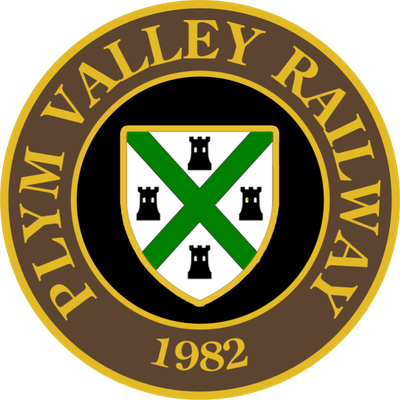Locomotives
The Plym Valley Railway has several operational locomotives and a range of carriages and wagons on site. There are also engines under restoration. Information about many of our engines and rolling stock is available below.
0- Albert was built for the British Sugar Corporation, and worked at their Worcester & Somerset plants. She has been at the Nene Valley Railway and East Kent Railway before being privately purchased and coming to the Plym Valley Railway in 2004. She was sent to Portland for repairs, and returned in 2007. As of 2016, Albert is currently operational. "Albert": Barclay, Works No. 2248 Built in 1948 by Andrew Barclay, Sons & Co. Ltd. at Kilmarnock, Scotland. Works No. 2248 Boiler pressure: 160 psi Weight: 35 tonnes approx in working order Tractive effort: 19,430 lbs at 85% boiler pressure Cylinders: 16"X24" | 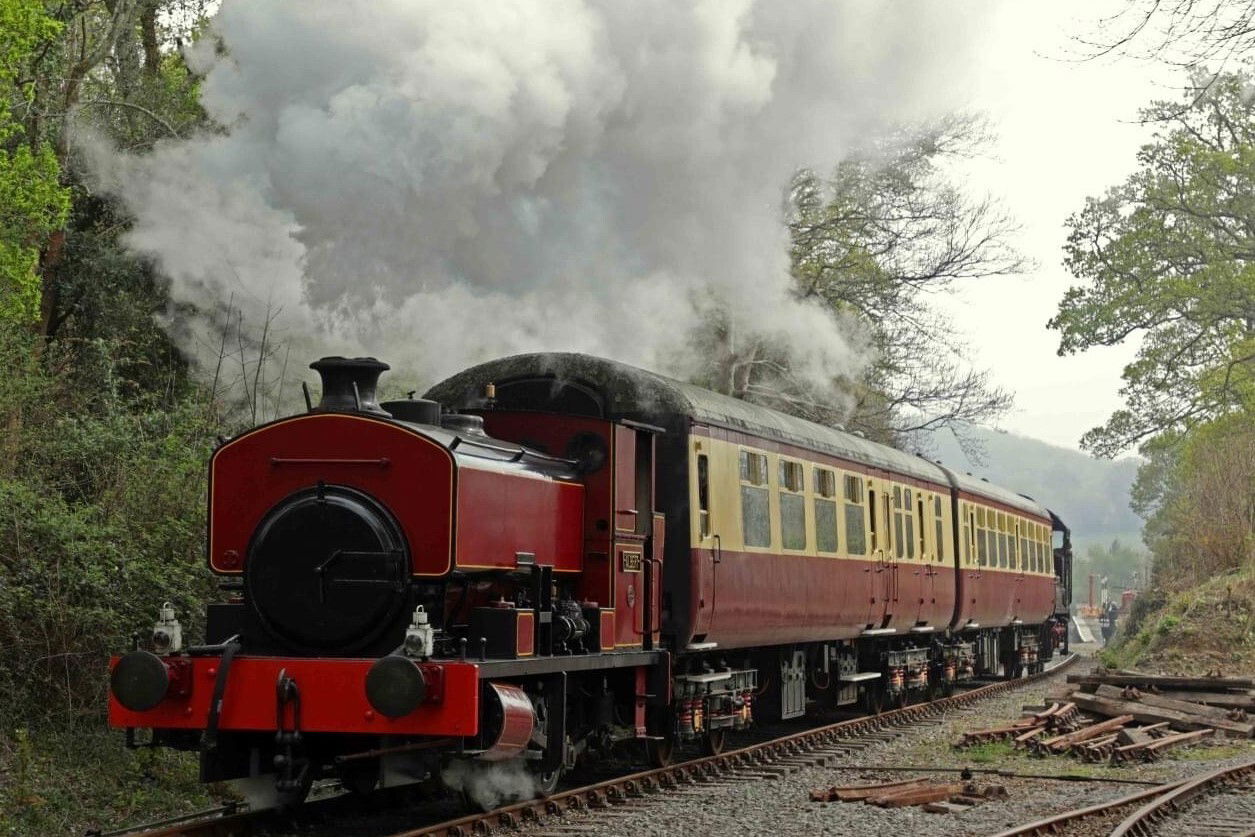 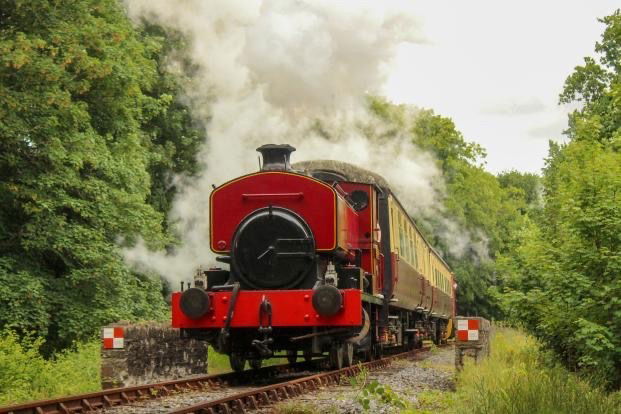 | ||||
TKH 5374 TKH5374 came to the Plym Valley Railway on Thursday 17th November 2016 after leaving the Northampton & Lamport Railway after a change in the ownership and becoming privately owned. The locomotive is now in a striking livery supporting Children's Hospice South West and was named 'Lord Oliver Brown' on 9th March 2025. The story behind the locomotive can be read HERE. The locomotive is based on a draft from the years 1927-1929; six locomotives of the factory designation T1A and T2A were built by Fablok. The technical documentation survived until after World War II and it was decided to develop it into a new class of locomotive. 477 examples were delivered in the years 1948 - 1961 including to China, Romania and Hungary. The later designation were referred to as Ferrum 724. In China the locomotives were designated as XK 13 and several examples of the class were reported to be working in 1993, with at least three preserved thereafter. Builder – Fablok, Poland Works Number – 5374 Loco Weight – 44.4 tonnes Fuel Capacity – 2.5 tons | 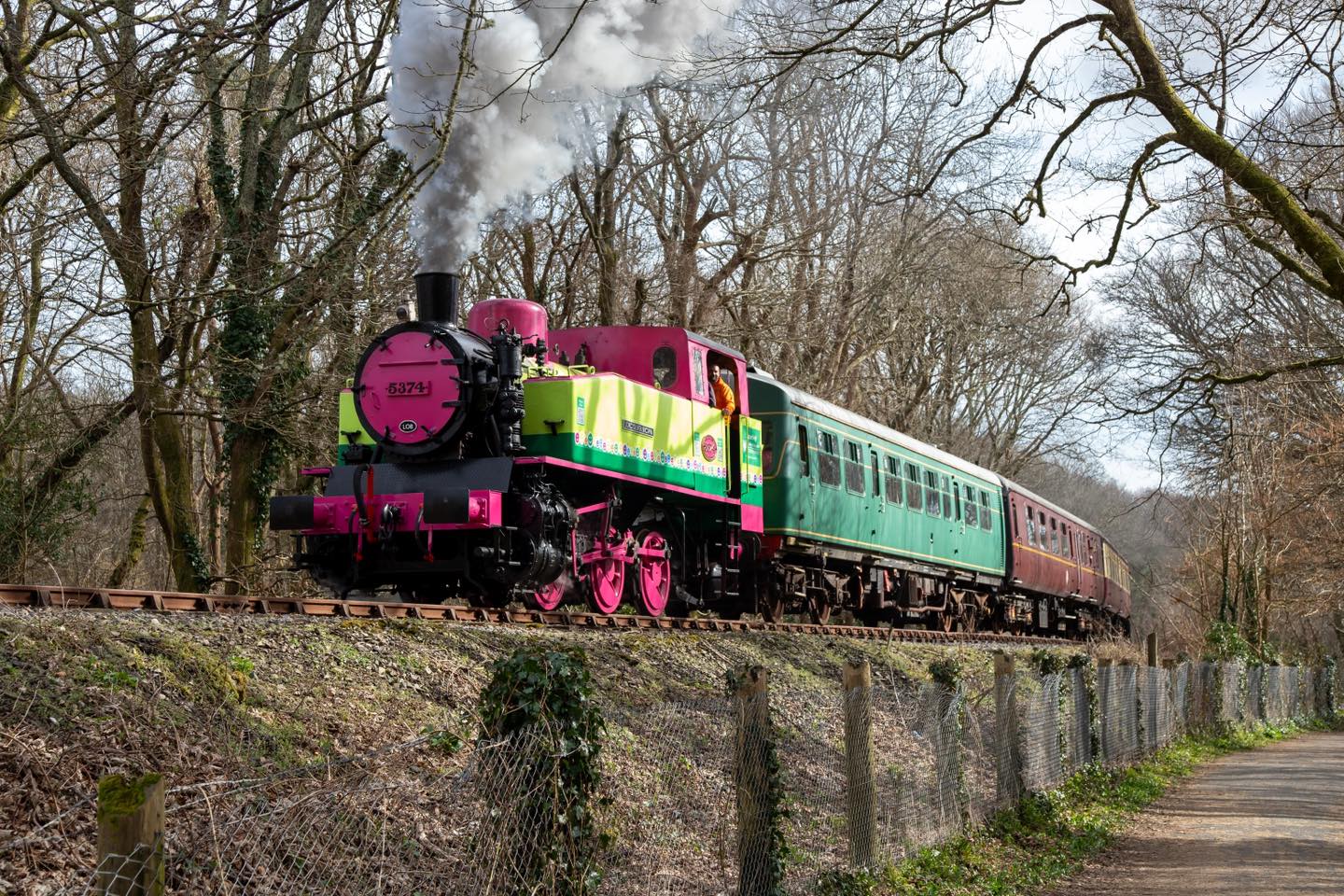 | ||||
Class 08 No. D13002 The ‘08’ arrived in an operational condition at the Plym Valley Railway in 1982 and for many years was the only operational engine on the railway. The locomotive was constructed in 1952 at Derby (the third Class 08 to be built) and served Bristol St Philips Marsh and Bristol Bath Road depot until 1972. The locomotive was then sold to Foster Yeoman Ltd and moved to Merehead Quarry where it shunted stone trains. The locomotive became surplus to requirements in 1980 so was stored at Gloucester depot and was then sold to the Plym Valley Railway. The locomotive is currently painted in BR Black livery in ‘As built’ condition and displays 13002, the number given before receiving D3002. The locomotive was withdrawn from BR service before the TOPS classification so did not receive an 08XXX number. As of Summer 2024 the locomotive is withdrawn pending some engine and cosmetic work. Built in 1952 at Derby Wheel arrangement: 0- Weight: 50 tonnes | 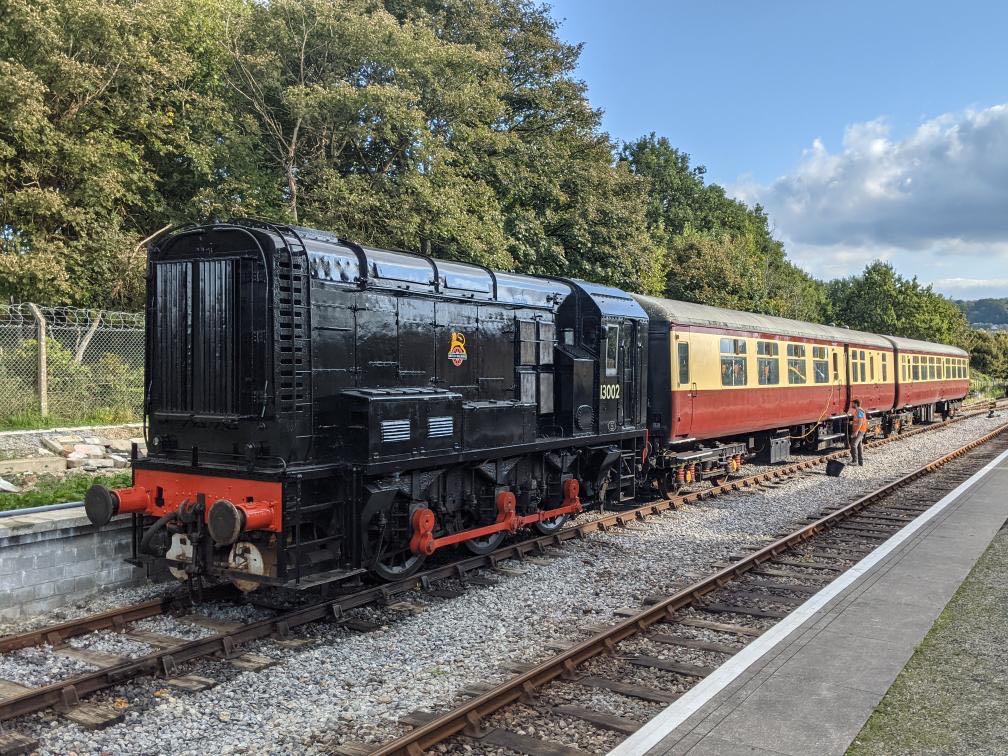 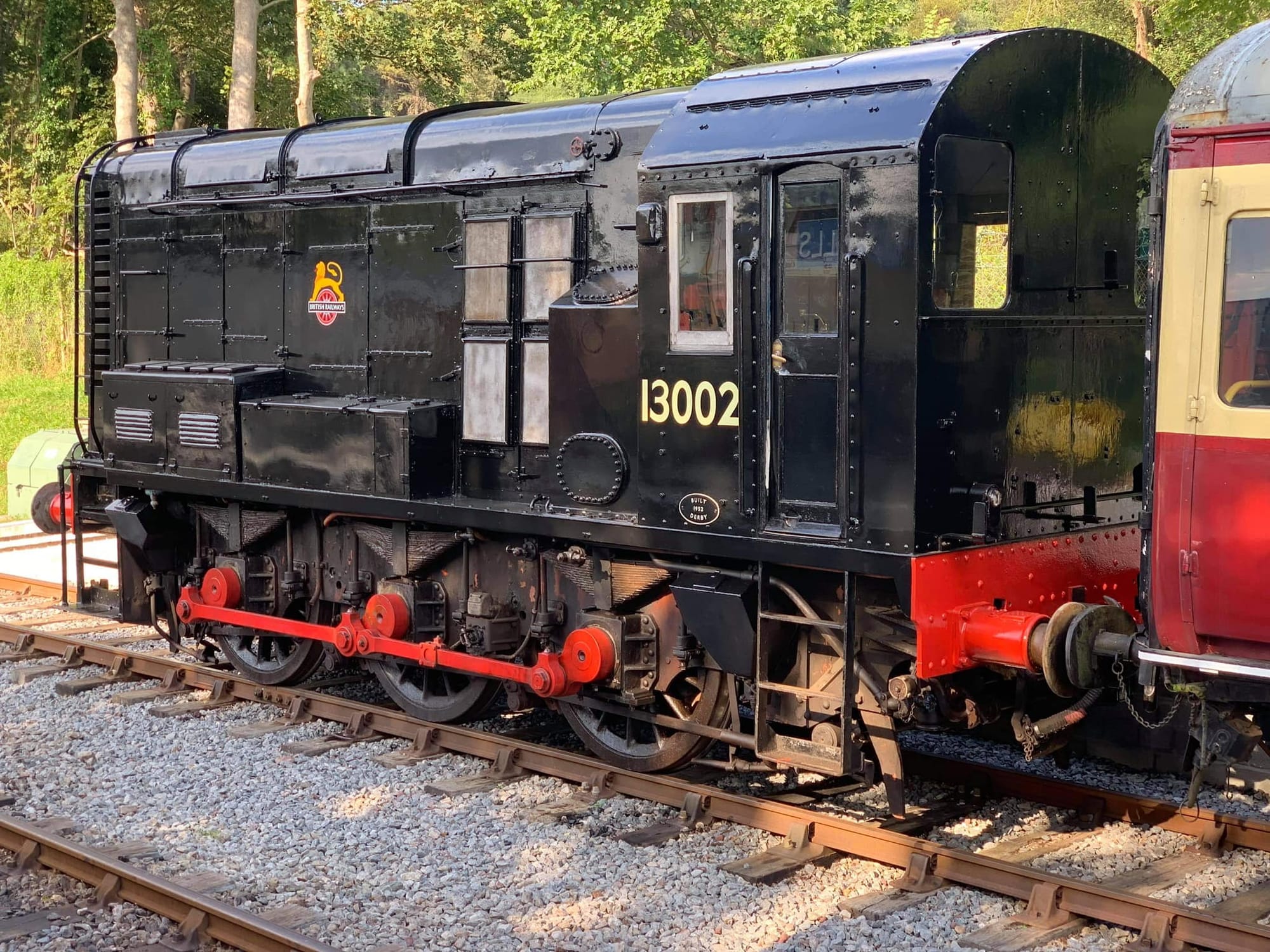 | ||||
No.125V ‘Vanguard’ Worked at Plymstock cement works until 1988 then came to Plym Valley Railway in 1990. Vanguard has been key in the construction of the railway and after many years of work has been withdrawn for an overhaul. Diesel Hydraulic " Vanguard" shunter Built in 1963 at Thomas Hill, (Rotherham) Ltd. Vanguard works, Kilnhurst, Yorkshire Weight: 29 tonnes Engine: Rolls Royce 6 cylinder diesel Power: 125hp Wheel arrangement: 0- Wheel Dia.: 3' 7" | 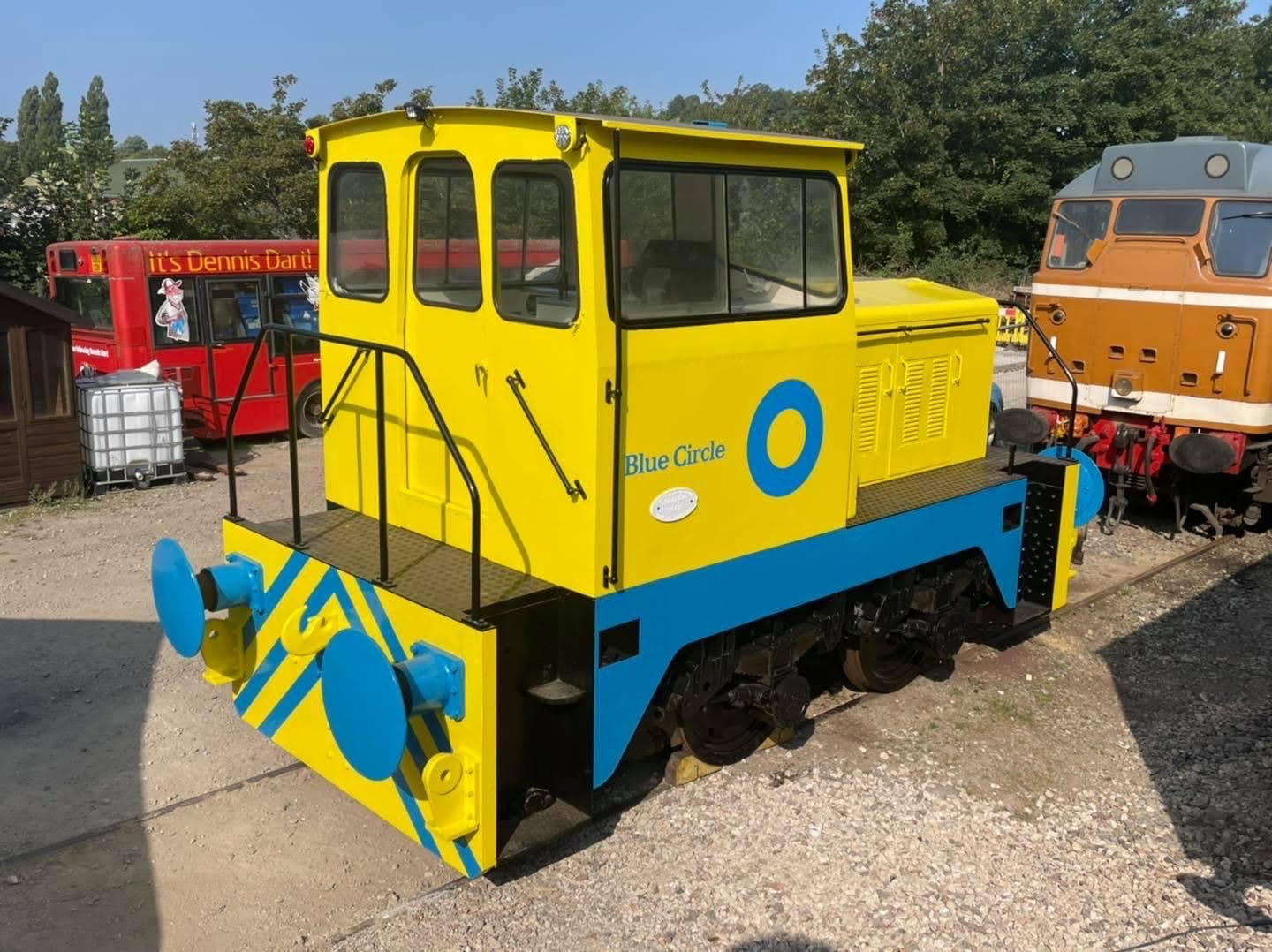 | ||||
Sentinel 0- The ‘Sentinel’ arrived in an operational condition at the Plym Valley Railway on 1st April 2015. The locomotive has had a life in Yorkshire and after being released into traffic by Rolls Royce, Shrewsbury on 11th July 1961 it was transported to Raisby Tarmac Quarry, Coxhoe, County Durham. The Durham Locomotive Preservation Group purchased the locomotive who moved the locomotive to the Weardale Railway in 2002. Under the same ownership the locomotive was moved to the NRM at Shildon during 2011 before being sold and moved to the Wensleydale Railway in March 2014. The locomotive was purchased privately and moved to the Plym Valley Railway for restoration which then lead to it standing in for the ‘Vanguard’ locomotive on Brake Van Rides and the works train enabling ‘Vanguard’ to undergo maintenance. As of Summer 2024, the locomotive's recent five year overhaul has been completed, the locomotive has been unveiled in Intercity Swallow livery and is in service. 10077 Sentinel Industrial Locomotive Built: Shrewsbury 1961 Weight: 34 tonnes Tractive Effort: 21600lb Engine: Rolls Royce C6 Engine Power: 230hp Maximum Speed: 18mph | 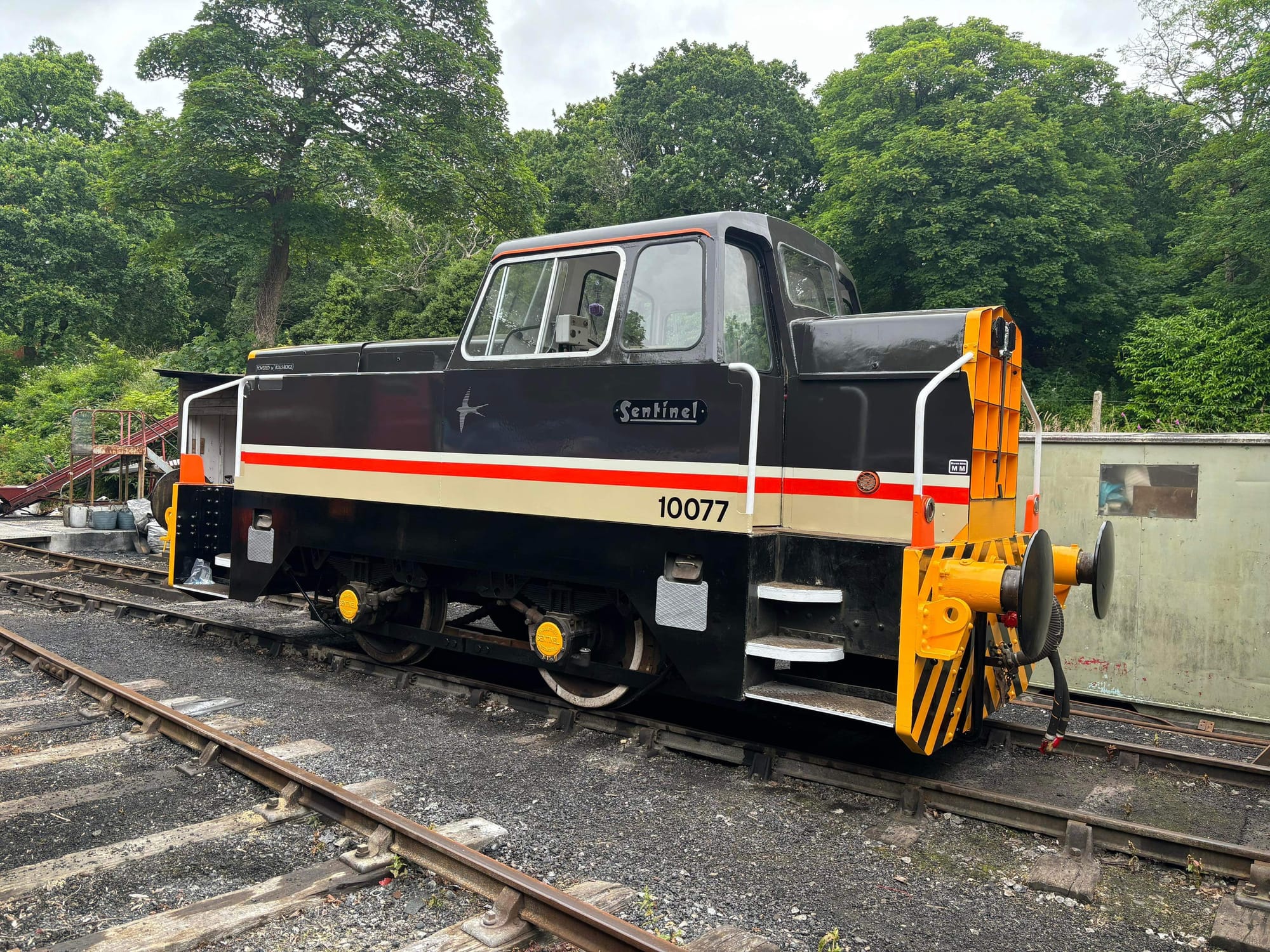 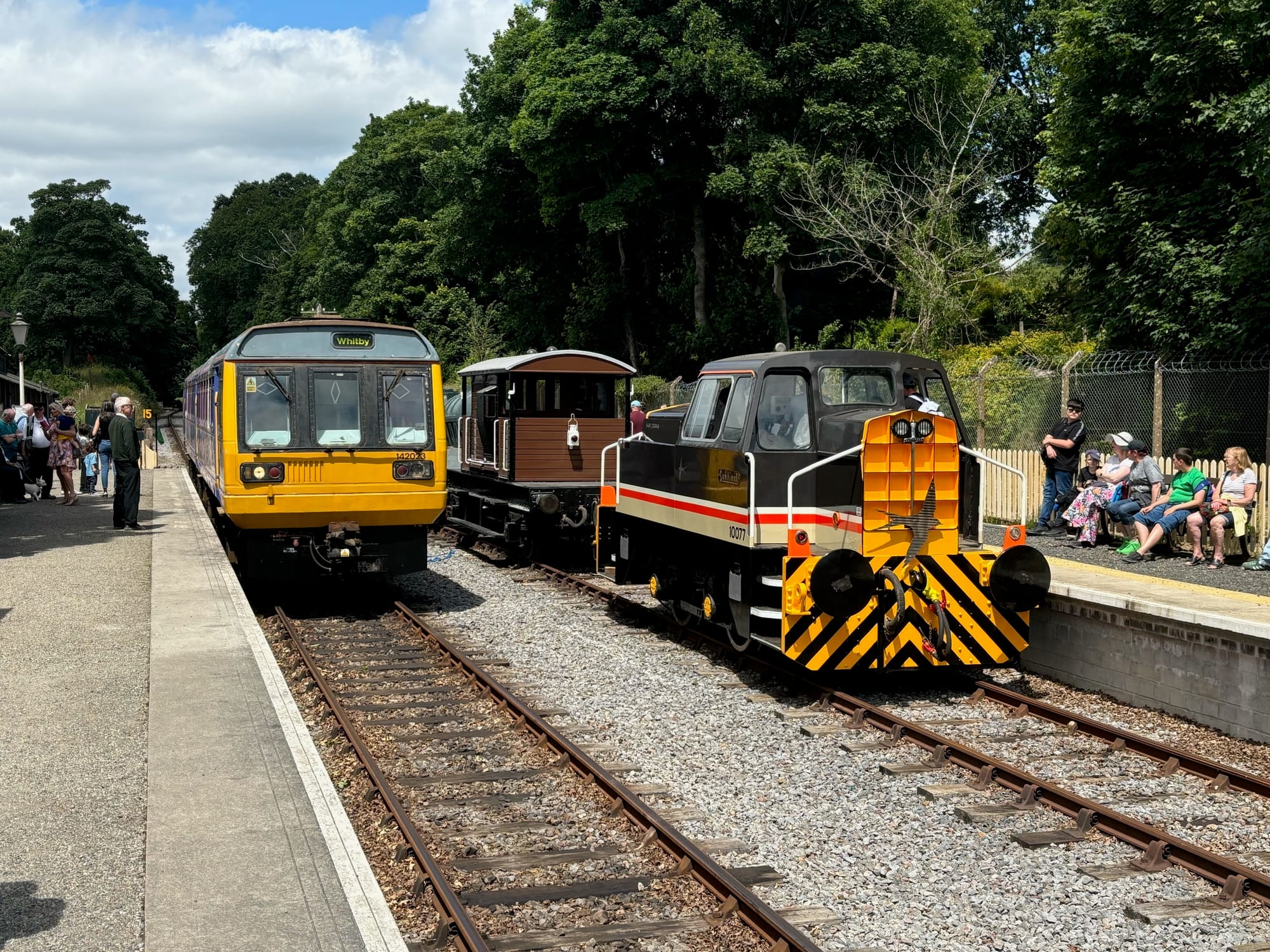 | ||||
Class 101 The British Rail Classes 101 diesel-mechanical multiple units were built by Metro-Cammell at Washwood Heath in Birmingham, England from 1956 to 1959, following construction of a series of prototype units. These classes proved to be some of the most successful and longest-lived of BR's First Generation DMUs, second in longevity only to the Class 121, with the final five units being withdrawn on 24 December 2003. Our Unit “Lab 19 Iris II” consisting of DMBS 50222 and DMCL 50338 was launched into service in Sunderland in 1957 in BR Green livery and was used in Northern England and the Midlands until 1991 where it was transferred to departmental use with BR then Railtrack and then Network Rail re-numbered as 901002. The DMU was sold and transported to the West Somerset Railway in 2008 before being moved to the Barry Tourist Railway in 2009. The Plym Valley Railway purchased the unit in April 2023 and it arrived soon after. Engines: (as built) AEC 220 6-cyl 150hp (from mid 70s refit) Leyland 680 6-cyl 150hp Transmission: Mechanical Standard - 4 speed epicyclic gearbox with axle mounted final drives on the inner axle of driving bogies. Brakes: Vacuum, Gresham twin pipe quick release system Gangway Type: Midland scissor Dimensions: 57' x 9' 3” Weights: Driving Motor Brake Second, 32 tonnes approx - likely to be different due to departmental modifications. Driving Motor Composite Lavatory, 32 tonnes approx- likely to be different due to departmental modifications. Max Speed: 70mph | 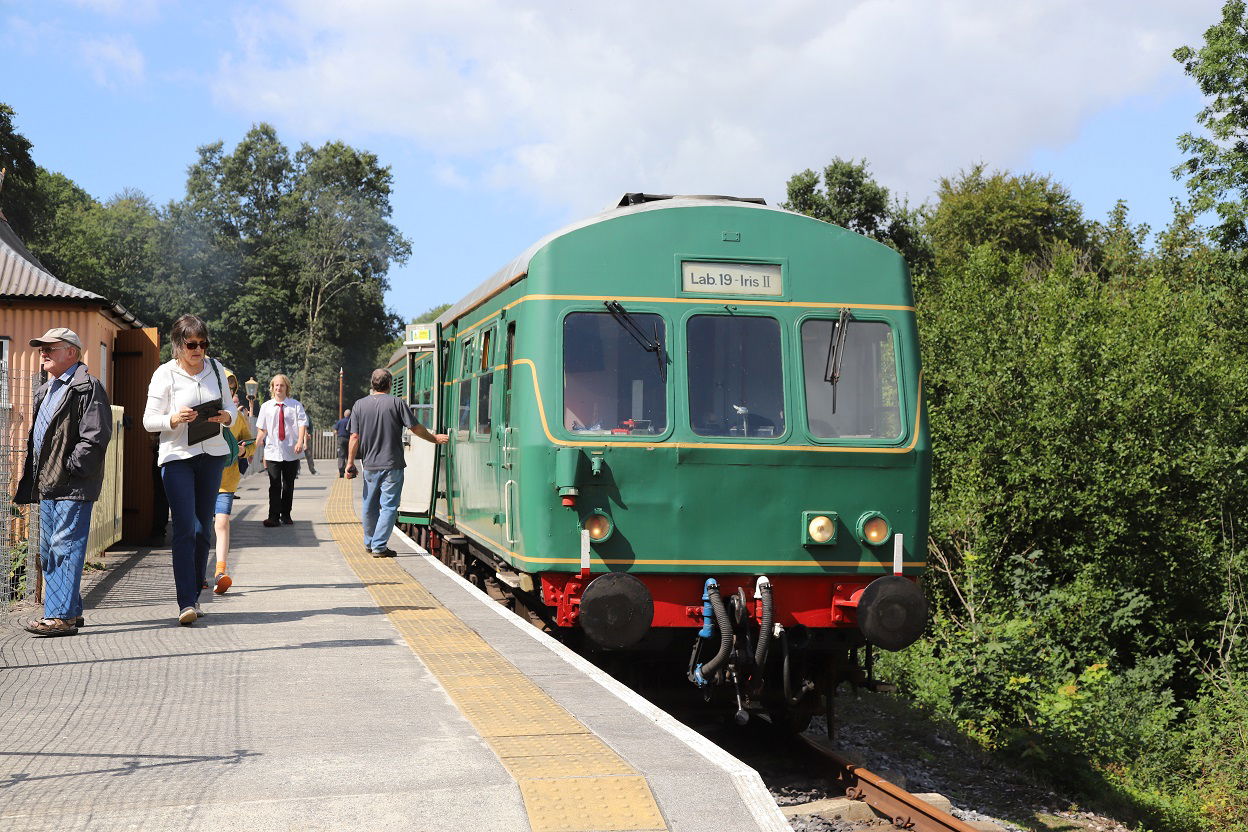 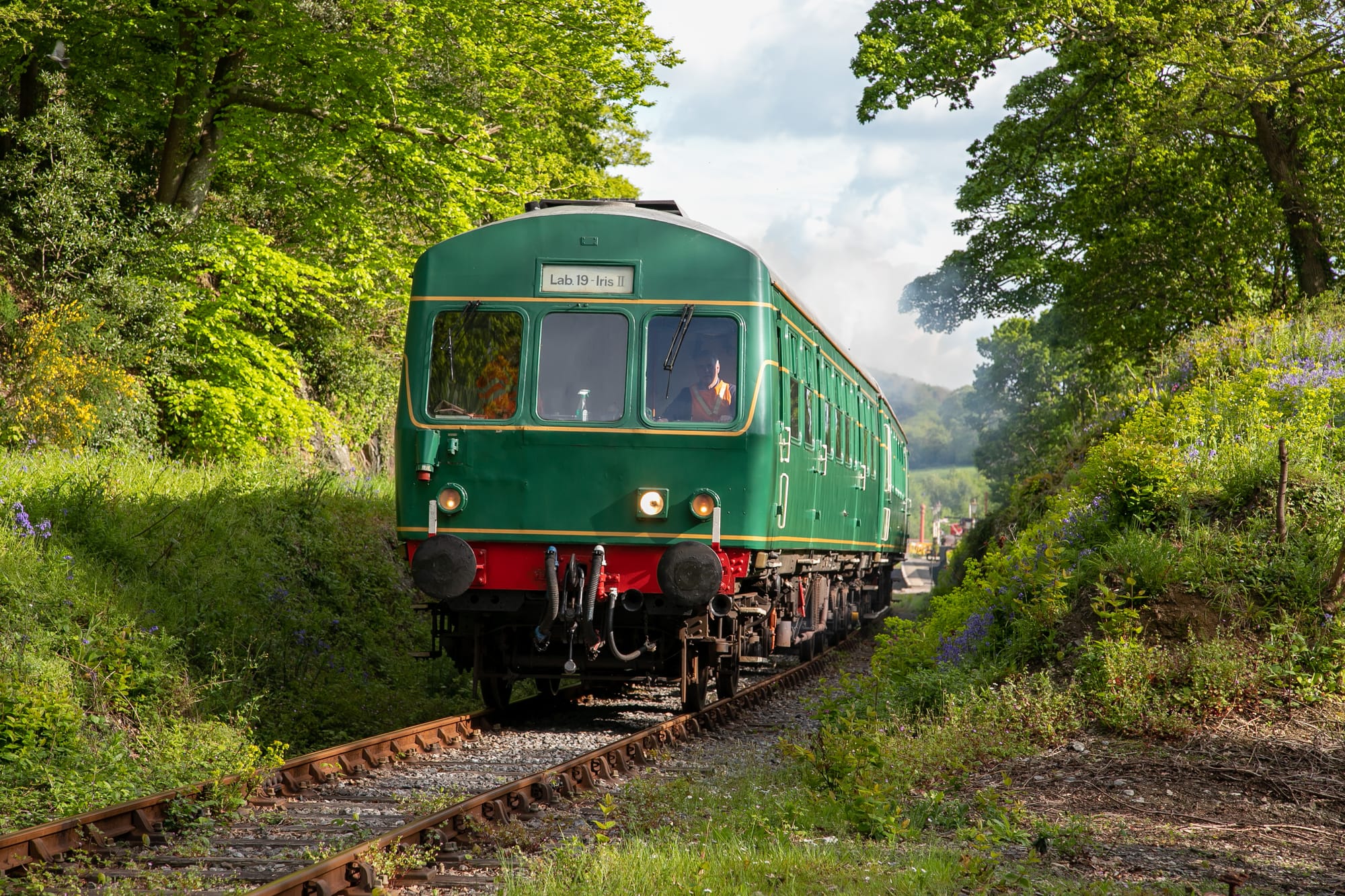 | ||||
Class 117 The Class 117s commenced work for British Rail in 1959- Built: Pressed Steel, Linwood, Scotland,- 51402 (Driving Motor Second (DMS) Seating: 89 51365, Driving Motor Brake Second (DMBS) Seating: 65 Weight: 36 tonnes, each car. Engines: Two B.U.T (Leyland) 680 6 cylinder horizontal diesels per car Power: 150 h.p per engine Coupling Code: Blue Square Maximum Speed: 70mph | 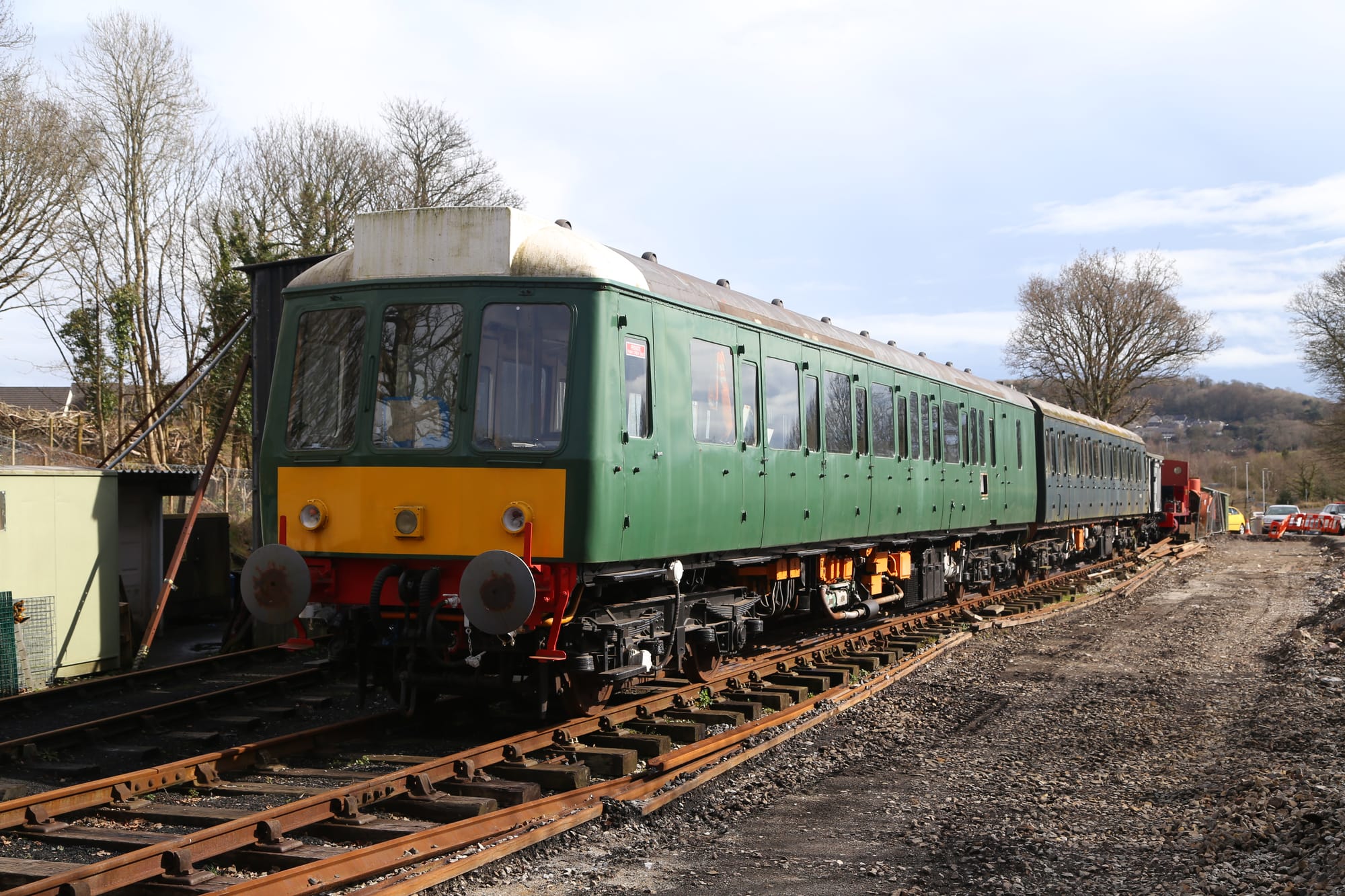 | ||||
0- No.705 was built by Andrew Barclay Sons Co. at their Caledonia works in 1937 with the works number 2047.The locomotive was built for the "The Clyde Valley Electrical Power Company" and was based at the "Yoker Power station" as locomotive number 4, near Glasgow beside the Clyde river. It spent its entire working life at this location shunting coal trucks to feed the Power Station until withdrawn in the 1970's. Later in the 1970's it was sold to a company who planned to build a railway on the Orkney Islands but this scheme failed, the locomotive remained stored at the Strathspey Railway until it was purchased by the previous owner who moved the locomotive to the East Somerset Railway where they finished its restoration and returned the locomotive to operations in 1994. The Swansea Harbour Trust Railway had similar locomotives which were absorbed into GWR stock in 1923,the previous owner decided to paint the locomotive into this 1923 GWR livery and numbered it 705 which was the next vacant number in the GWR series. The locomotive ran in GWR Green until its next overhaul in 2000 when again the East Somerset Railway restored the locomotive but this time in BR black which was kept until withdrawn in 2007. The locomotive was offered for sale and it was purchased by a PVR member in June 2011, the restoration started during 2012 work to date has included turning the tyres, machining the journals, new foundation ring, full re- | 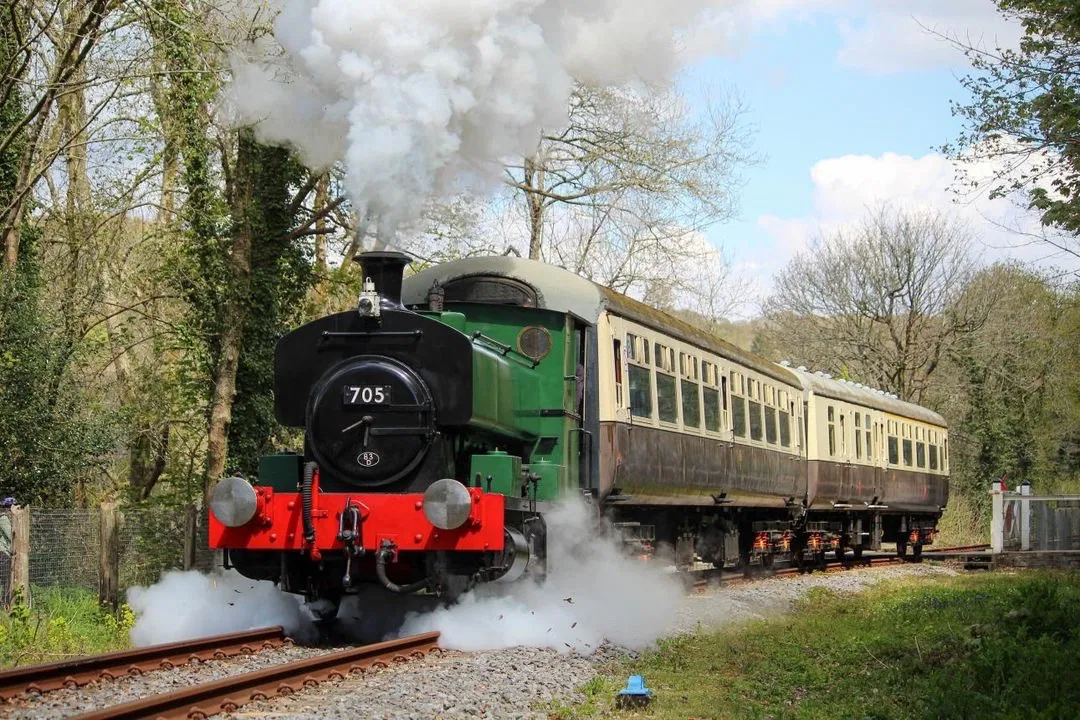  | ||||
| Class 143 No. 143618 The British Rail Class 143 is a diesel multiple-unit railbus, part of the Pacer family of passenger trains introduced between 1985 and 1986. During the 1980s, British Rail (BR) was interested in replacing its first-generation diesel multiple units, particularly in the use of railbuses to service its lightly used branch lines. It was decided to develop such a vehicle with a high level of commonality with the widely used Leyland National bus, leading to its modular design serving as the basis for the design. The Class 143 embodied several advances over the original model in terms of ride quality and reliability. During its operating lives, the type was tasked with various passenger services across the United Kingdom; being initially operated in the North-East of England, all units were subsequently transferred to other regions, including Wales and South-West England. Due to their non-compliance with the Rail Vehicle Accessibility Regulations 2008, the Pacer family began to be withdrawn during the late 2010s. While modifications for compliance were proposed by rolling stock companies, no train operator took up the option. Great Western Railway (GWR) retired their Class 143 fleet in December 2020. The Plym Valley Railway was given the chance to gain Class 143 No. 143618 from GWR in Spring 2022 and it arrived at Marsh Mills in May 2022. WIth a unique twist on the livery it wore with GWR 143618 is now resident on the Plym Valley Railway | 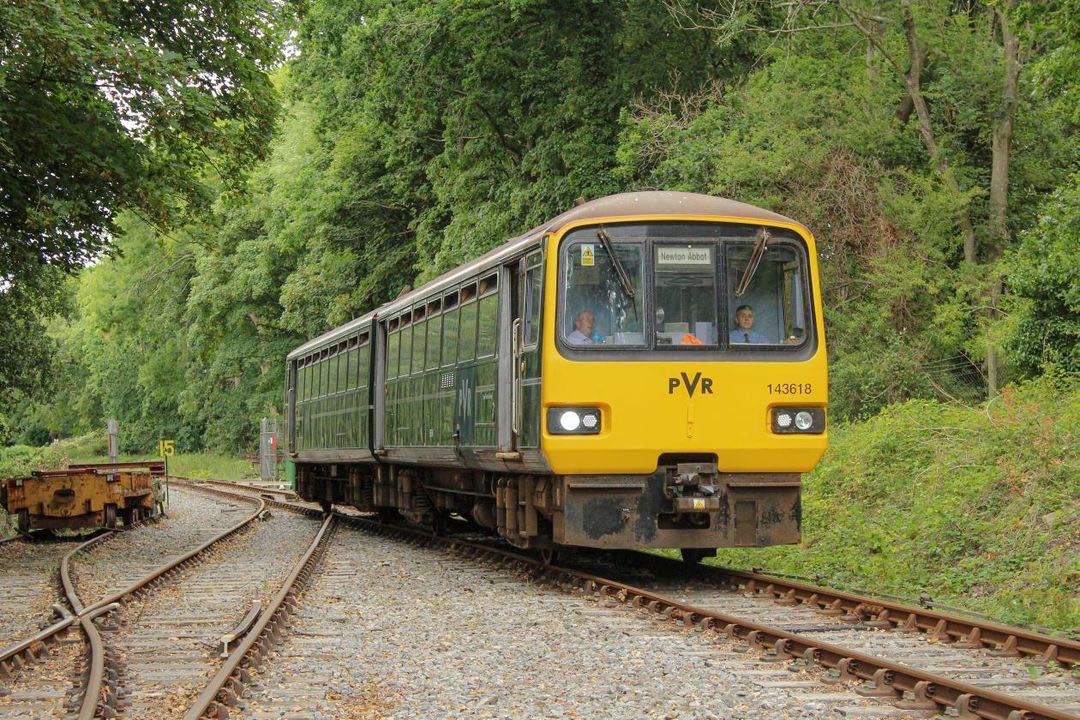 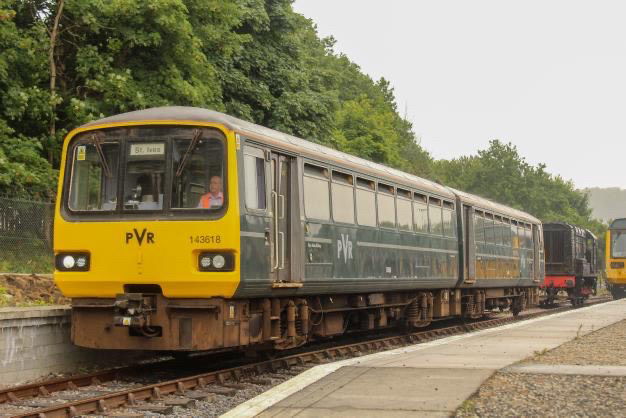 | ||||
Class 142 No. 142023 The British Rail Class 142 is a diesel multiple unit-passenger railbus. Theses were built for British Rail from 1985 to 1987. The class were built with a high level of commonality with the widely-used Leyland National bus similar to the 143 outlined above. They are part of the Pacer family of railbus. The last set was withdrawn from service in 2020 owing to non compliance with accessibility regulations 2008. Over the years these units saw service in most parts of the UK, from the North East to the South West and even Wales. One unit even reached Canada! Our unit 142023 arrived with us in January 2021 from storage at Heaton TMD in Newcastle! The unit, has recently recieved a cosmetic overhaul by our volunteers and is now painted into BR Chocolate and Cream 'Skipper' livery. The unit is operational. |   | ||||
| Ruston & Hornsby LSHH 0-6-0DH No. 429 The class 07, on which River Annan is based, was originally designed to replace steam power on the Southampton Docks network, which at its peak consisted of some 80 miles of track. The specifications for the class arose from a report produced by the General Managers of British Transport Docks and the Southern Region of British Railways. Due to the need to traverse small radius curves on the docks network, it was concluded that a compromise between a shorter wheelbase and greater power output was desirable, thus giving rise to the requirement for a locomotive with a fixed wheelbase not exceeding 10 ft and maximum power output of around 275 hp to 300 hp (with a weight not exceeding 10 tons). With the success of the class 07 design Ruston and Hornsby continued to build these locomotives, most of which saw service with the Army. This particular example was built in 1961 for use with the MOD, it is powered by a 275 HP Paxman V6 engine. This locomotive is operational and can be seen running services to the same effect as 13002 our resident 08. With it being vacuum braked it is capable of running our Mk2 coaching stock on diesel days. | 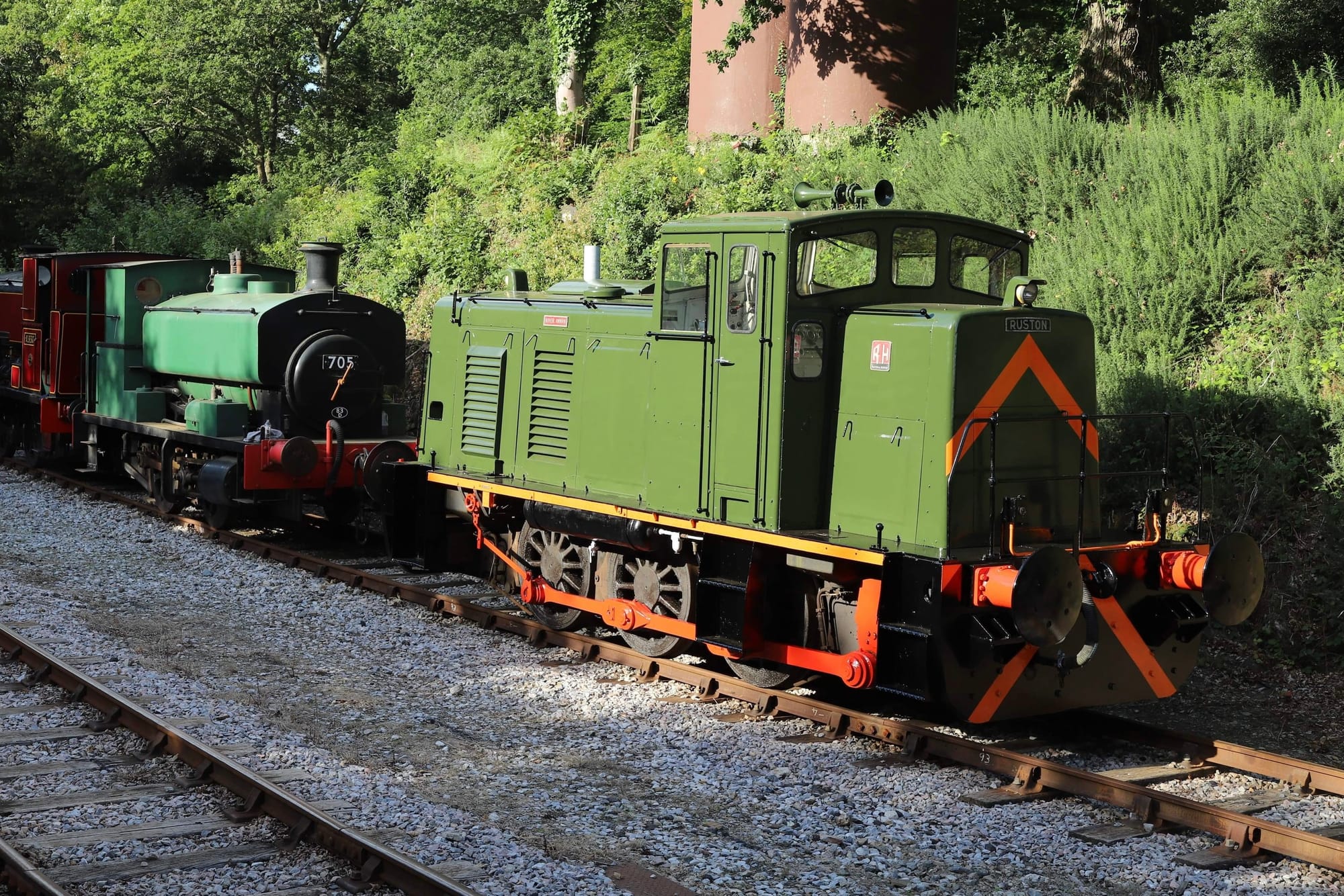 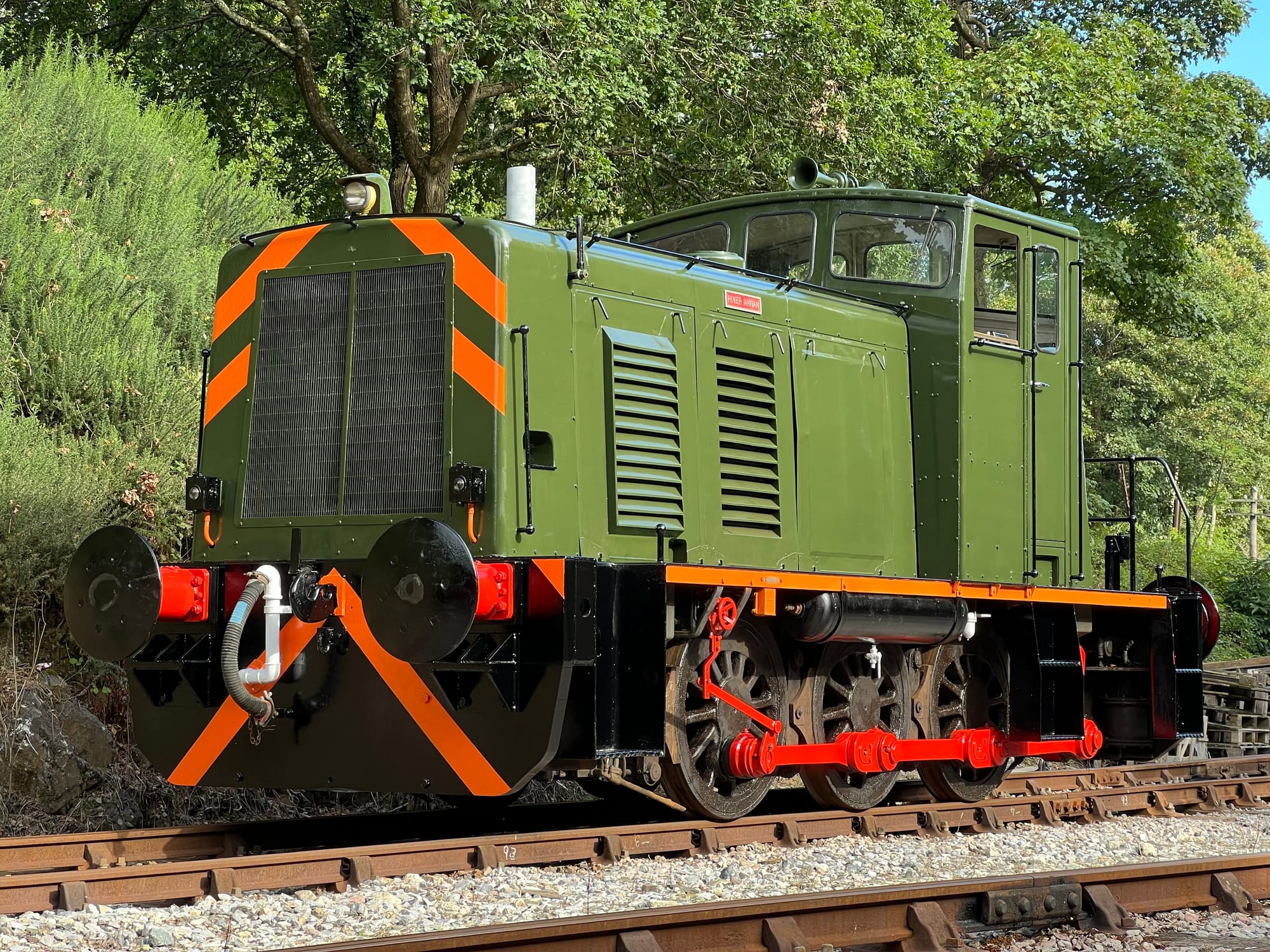 | ||||
